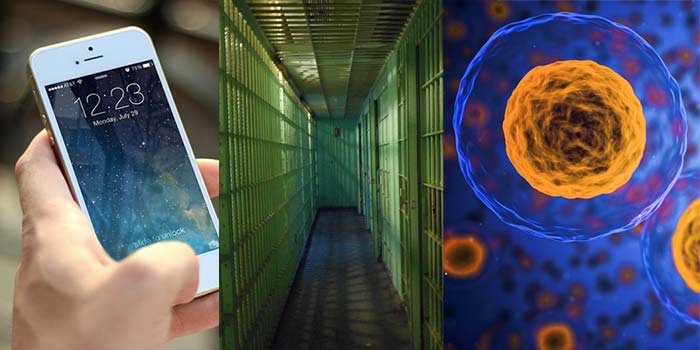At this conference held in Munich during the last week of November 2018, keynote speeches from senior IP leaders at Google, IBM, and Siemens, and many vendor presentations highlighted how advanced IP platforms are already taking advantage of artificial intelligence and machine learning. A record audience of 630 delegates from 55 countries heard how patent authorities around the globe are also adopting software to assist with administrative functions and scouring prior art that multiplies in volume each year.
Experts Peter Streckel and Philip Arvantis of CPA Global were quick to point out these new technologies aren’t replacing people anytime soon. Using a visual metaphor similar to the one below, their “Hand in Hand: AI&I” presentation cleverly made the case for leaving monotonous tasks – like powering through a stack of documents – to the machines and saving valuable activities requiring interpretation, intuition, and interaction to humans. The Innography platform already uses AI to reduce human error in significant ways, such as correcting spelling mistakes and dealing with the complexities of re-assignments, non-assigned patent applications, and more.
Experts Peter Streckel and Philip Arvantis of CPA Global were quick to point out these new technologies aren’t replacing people anytime soon. Using a visual metaphor similar to the one below, their “Hand in Hand: AI&I” presentation cleverly made the case for leaving monotonous tasks – like powering through a stack of documents – to the machines and saving valuable activities requiring interpretation, intuition, and interaction to humans. The Innography platform already uses AI to reduce human error in significant ways, such as correcting spelling mistakes and dealing with the complexities of re-assignments, non-assigned patent applications, and more.

Three types of cells, easily distinguishable by humans but not machines
There are some sensational advancements using imaging technology, however. One of the most exciting examples of AI presented at the show is a design patent search tool developed by IPPH (Intellectual Property Publishing House, of China) which uses image recognition to find relevant results based on an uploaded photo alone. A user can add text-based search refinements from the beginning of the process or after the initial search to narrow the results. Because performing design searches the “old fashioned” way involves entering in very specific visual descriptions and searching through perhaps thousands of images, this tool and others like it have the potential to save untold hours.
Belinda Gascoyne, Senior IP Law Counsel from IBM, has a bold outlook on what AI is currently capable of that’s influenced by their success with Watson. While not yet a part of any IP tool, she points out that simulation of human intelligence is a reality at IBM. Like other presenters, she stresses that AI tools are best for data-heavy, iterative tasks and that lawyers still need to be responsible for the final results.
Ms. Gascoyne also brought up a meeting held by the World Intellectual Property Office (WIPO) in May of 2018 that discussed current and future uses of AI by patent authorities. WIPO and some other patent authorities are already using categorization software using AI that assigns international patent codes (IPC) at the subgroup level. The group is working with intellectual property offices around the world to produce standards for expanding usage into searching prior art, assigning document numbers, establishing examination checks, translating languages, and assessing fees.
The most stunning example of machine learning offered by presenters Eric Podlogar from ktMINE and Amit Alagh from Wolters Kluwer, wasn’t IP related, but is pretty stellar nonetheless. Two years ago, 20th Century Fox created a movie trailer for the AI horror picture Morgan using Watson. Watson was fed 100 horror movies to determine which scenes and triggers created the most emotional responses. Next, it analyzed the entire Morgan film and selected its highlights for an editor. While a trailer for most movies takes approximately one month to produce, the trailer for Morgan was created in just 24 hours of work time.
It may be a while before pivotal advances in AI completely change the way IP management operates, but it’s no longer the stuff of science fiction.